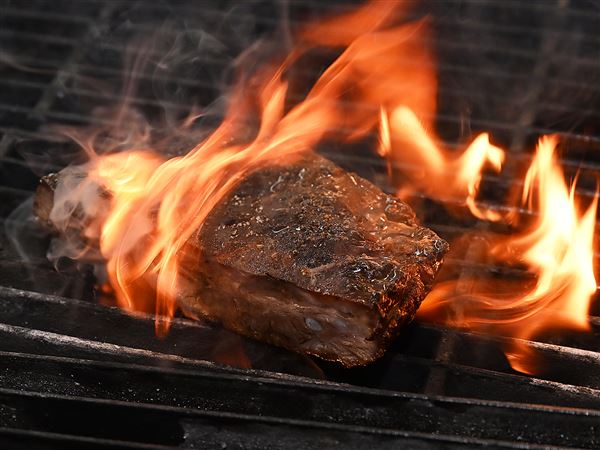Decorative ceiling paddle fans are attractive and practical. During warm months the gentle stream of cool air can often mean the difference between using the air conditioner or not. During winter months the fan rotation can be reversed to force air upward -- circulating the pocket of warm air trapped above -- utilizing existing heated air to cut heating costs.
In either case, a ceiling fan can improve comfort and result in a reduced utility bill. By the way, if sweaty windows are a problem, a ceiling fan run in reverse will cause air movement that will cure condensation once and for all.
Decorative ceiling paddle fans are available in a variety of shapes, sizes, models and features. Four blades, five blades, long or short blades, painted finishes, metallic finishes, remote kits and light kits make customizing a fan ... a breeze!
Choosing the correct fan blade size is easy. Ceiling fan blade-spans range from 29 to 54 inches. The most popular is the 52-inch model, according to the American Lighting Association. A ceiling fan should be installed in the middle of the room, at least 7 feet above the floor and 18 inches from the nearest wall. If ceiling height allows, the fan should be installed 8-9 feet above the floor for ideal airflow.
Placing a ceiling fan in a bathroom or other humid locations? Purchase a fan that has been UL-listed with a "damp" rating. For fans that may come in direct contact with water, like on a patio or front porch, look for a UL "wet" rating. These fans include features such as sealed/moisture-resistant motors, rust-resistant housing, stainless-steel hardware and all-weather blades.
Ceiling fan performance and energy savings rely heavily on the proper installation and use. Here are a couple of tips to ensure quality and product performance:
• Use a metal electric box in the ceiling -- metal is the strongest kind.
The box should be firmly attached to solid wood framing so that it will hold the weight of the fan. If you are replacing a conventional ceiling fixture, most likely you will need to replace the electrical box. If wood framing is not available in the center of the room, a special ceiling fan mounting bracket, with spiked ends, should be installed between joists. Keep in mind that ceiling fans can weigh as much as 50 pounds.
• After installation, check for wobbles.
If the fan is wobbly, there are ways to repair it. First, be sure that all connections are properly aligned and tightly fastened. Check the alignment of the blades by holding a measuring tape vertically between the ceiling and the blade edges; you may be able to gently bend a misaligned blade holder back into place. If all blades are aligned, a balancing kit can then be used to pinpoint the culprit. These kits are usually provided as part of the fan manufacturer's installation kit.
Ceiling fans range in price from less than $150 to well over a $2,000. If you don't mind wobbling fan blades, a noisy motor and early replacement, the least expensive is the ticket. On the other hand, if you're looking for a quiet, smooth operation, plan to spend about $300.
You dirty rat
Did gangster actor James Cagney ever really utter the phrase, "You dirty rat?" Whether he did or not, the phrase is one you might find yourself muttering if cold weather has rats and mice muscling in on your territory. You can try rubbing them out with traps and poison, but odds are more will just take their place. You need to you find out how and where they're getting in.
Look for openings around pipes, rotted wood and gaps under doors or spaces between shingles that allow them into attics or walls. Rats don't need much space; even missing mortar between bricks allows entry. Use caulk, mortar and wads of steel wool to seal all openings, and then check periodically until you're certain they're gone. Always close garbage cans, seal up food scraps and don't leave pet food out. Every year rodents eat more pet food than pets do.
Mildew underneath
Q. The clear caulking that is put around showers, sinks, and windows -- after a while it seems that mildew gets under it. Is there any way of preventing it and/or cleaning it? Or does one have to remove and redo?
A. Mildew beneath caulk indicates that moisture is getting in. Water usually makes its way behind caulk because it has separated from the surface it was applied to protect. The separation can occur because the caulk was too brittle and fractured as adjoining surfaces expanded and contracted. The separation also can occur if the caulk was applied to a dirty surface. Regardless, once mildew gets behind it, caulk should be replaced (not covered, replaced). Use a caulk remover and a sharpened Popsicle stick to easily and safely remove all of the old caulk.Clean thoroughly (way back in the groove) with pure rubbing alcohol and then dry thoroughly (a hair dryer works great). Once the area is perfectly clean and dry, use a silicone or polyurethane caulk.
First Published: February 17, 2013, 10:00 a.m.















